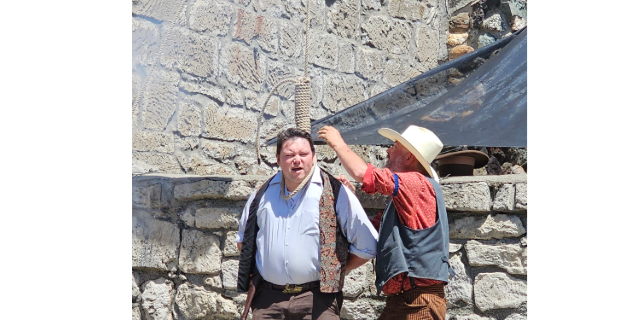Beyond aerobics: Aqua fitness branches out into spinning, kickboxing and more
Published 12:00 am Sunday, April 28, 2019
It’s a new, if not odd, sight inside some public pools in Washington, D.C.: people kicking submerged punching bags, spinning on poles that rise from the water, jumping up and down on floating boards.
While hydro fitness has been around for decades, its cool factor has shot up in the past few years. They are extremely popular internationally, as well.
The rebrand partly comes thanks to the promotional efforts of the nonprofit Aquatic Exercise Association. Aqua classes are no longer primarily viewed as the classes your grandmother takes.
And that’s because so many of the hip new hydro classes are serious calorie burners at 500 to 800 calories an hour.
I’ve never strayed far from lap-lane workouts, but my attention was diverted from my usual back-and-forth to a group of people chest-deep in water kicking and punching at boxing bags as the teacher called out instructions. The classes were established by Rashid Jones, a Department of Parks and Recreation specialist certified in aquatic fitness.
It looked different and challenging, so I decided to try some classes. First, I joined in for part of a HydroKick class, alternating kicking and punching a bag with Wynonia Harris, 44. Harris, who had been taking the class since October, knew what she was up against: water resistance. According to the AEA, water is 800 times denser — more viscous — than air. And the resistance is bidirectional. So, when kickboxing in water, my quads were working in one direction and my hamstrings in the other.
“It was something different and it was in the water, so I figured it would be less pressure on my knees,” Harris said. She’s right. Because of buoyancy, impact is reduced by about 50 percent when you’re submerged to the waist and 75 when you’re submerged to the chest.
Along with buoyancy and viscosity, research shows that hydrostatic pressure and thermodynamics play a role in enhancing a water exerciser’s fitness. Hydrostatic pressure — a “multidirectional pressure” that pushes on the chest in water — makes breathing more difficult. Kinetics research suggests this added value forces even fit people who take to the water to develop stronger assistive breathing muscles.
I’ve taken one spin class in my life and wasn’t a fan. But I found a sample HydroSpin class intriguing. Joint-friendly, it felt like a constant uphill climb as we moved our hands into different positions on the bars as well as in the water and alternated standing and sitting while peddling. After just a few minutes, I was feeling it.
I didn’t know real intensity until Jones had me try some HydroBoard exercises. With the surfboard-wide floating mat tethered to the lane ropes by its four corners, I worked my core as I tried to center myself while attempting to jump rope (yes, on the unstable rocking board!), do a burpee or nail a bird dog plank without rolling into the water. It didn’t help that I couldn’t stop laughing every time I fell in. It was one of the most fun and challenging experiences I’ve had in the water.





